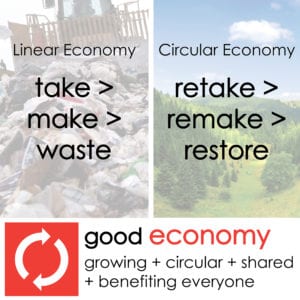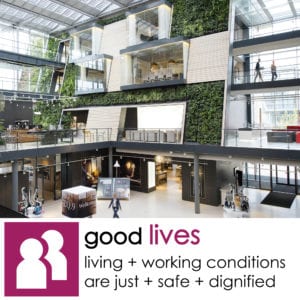by William McDonough
Many companies are doing good work to reduce their negative impact on resources and workers, but often through a narrow perspective focused on piecemeal improvements. They improve transparency and traceability, and make some processes more efficient, but pay little attention to their heavy use of toxic chemicals. They develop complex recycling for hybrid materials, rather than redesign the product and delivery for full-value recycling. These efforts all focus on minimizing short-term damage, which is certainly important. But it can be done better by eliminating problems altogether with designs that optimize long-term gains.
To get there, companies need to address their overall processes and question their assumptions. They’re used to doing things a certain way and believing they can make a difference by working only at the margins.
What if companies built sustainability into the very design of their products and production processes? No longer would they design products to meet cost, appearance, and functional requirements, and only later work to mitigate the harms from those choices. They could even go from a linear design for disposal to a design for continual use and reuse. They could focus on generating positive impact, not on reducing negative impact. When it comes to sustainability, they could create “more good” instead of simply being “less bad.”
The Five Goods concept, based on Cradle to Cradle® and described below, will help companies to focus, funnel and evaluate their efforts along those categories, while enabling the users to innovate and scale their efforts.
The Five Goods:
When companies start from a Five Goods mindset, they can design their products and processes upfront to promote holistic goodness. They’ll see everything as a resource for something else, and they’ll aim to apply those resources effectively rather than combining them in toxic ways or losing them to waste. This approach goes well beyond supply chain management to promote fundamental and continuous improvement. It prompts companies to get out of their usual frames of reference and imagine much better ways of working.





